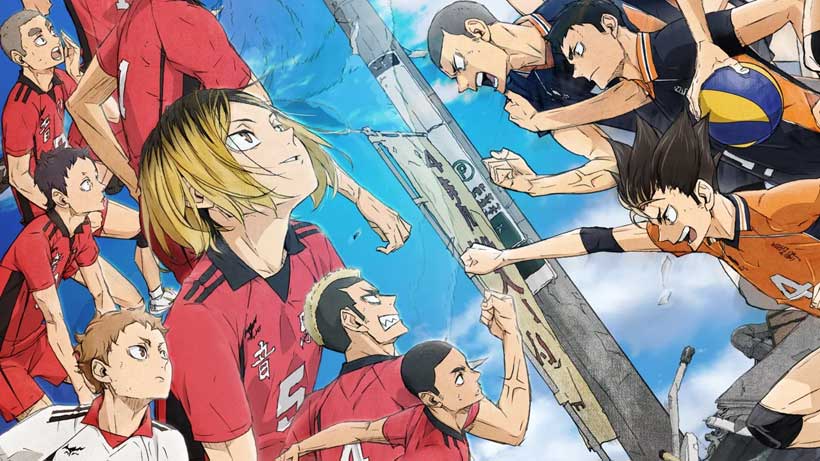Nowadays, Japan is synonymous with anime. Their fun-loving characters such as Pikachu from Pokemon, Naruto Uzumaki from Naruto, Sailor Moon, Izuku Midoriya from My Hero Academia, have all won the hearts of their viewers. As well as their “Cool-Guy” archetype characters such as, Levi Ackerman from Attack on Titan and Satoru Gojo from Jujutsu Kaisen, which has all undeniably made people swoon over. However, as much as the world has changed in the last 100 years, Japan has successfully shifted people’s view away from their imperialist past, to a more “innocent” country per se, one which focuses on developing various technological advancements and creating lovable 2D stories. Thus, this begs the question, how does Japan utilize anime as a means of soft power to change the world’s view on Japan as a nation itself?
Before delving deep into the question at hand, one must understand the definition of soft power itself. According to Joseph Nye, unlike hard power, soft power is less coercive and forceful. It utilizes culture, ideology, and values in order to influence other nations interests, to align with their own. As nations are moving away from the traditional hard power methods, using orders and coercion to influence other nations, soft power is on the rise, so much so that it is arguably more influential than hard power. This is because soft power is done subconsciously, to the point where erasing parts of a nation’s history is justifiable to maintain its image, as is done in Japan.
In the 20th century, Japan was well known for its Imperialistic nature. From the atrocities committed by the imperial army in Manchuria — present day Northeast China —, and the war crimes committed in various countries in East Asia, the Pacific and Southeast Asia, all of which are crimes the Japanese do not want the world to know, due to how severe it is. The erasure of historical accounts in the school textbooks done by the Japanese government through a process of “authorization” is one of the ways Japan tries to save its face, resulting in over 58,82% of Japanese students not being aware of the atrocities committed by Imperial Japan (Prem, 2023). Not only that, but former prime minister Shinzo Abe has accused China of fabricating the events of the Nanjing Massacre. With the erasure of its history, it becomes easier for Japan to rebuild its image from scratch, through an initiative established in 2002 as a means to promote Japanese culture to the outside world.
The Cool Japan initiative is a policy with two main goals, namely to boost cultural efforts, and to promote a positive international image. Through the commodification of Japanese culture, it creates something that is appealing and attractive to foreigners. Studio Ghibli movies, namely My Neighbor Totoro, Spirited Away, and Howl’s Moving Castle are all made during the Cool Japan era, further branding Japan as a “peaceful” nation. Anime is a unique way for Japan to exhibit its soft power tendencies through the Cool Japan initiative. It paves the way for Japanese culture to be presented, be it from the food the characters eat, the setting of the movie/show, and the actions the characters are doing. An example of this can be seen in the movie Kimi no Nawa, which is set in Itomori, a rural town in the Gifu Prefecture, and Tokyo, whilst the story centers around the annual Japanese Autumn Festival. Through this, viewers can gain a glimpse of Japanese culture, despite it only being shown for 1 hour and 47 minutes.
It’s safe to say that anime is a worldwide success. It procured over 1.46 trillion yen in overseas sales and 669.3 billion yen in merchandise in 2022 (Statista, 2024). With anime becoming more accessible to the general public outside of Japan, through streaming websites such as Netflix and Crunchyroll, the influence of this media art form will continue to grow in the coming years. Not only that but anime has now moved away from the screen and established theme parks based on it, for example, the Ghibli Park, Nijigen no Mori, and Universal Studios Japan. This further emphasizes the cultural impact that these characters have on the general Japanese populace as well as tourists coming into the country, who may as well be visiting Japan because of an anime they watched. Hence, what does this mean for Japan on the world stage? As it veers away from its Imperial past, Japan is rebranding itself as a nation open for tourism, technologically advanced, and is passive due to their lack of any military personnel. Although the erasure of historical accounts is not ideal, the Japanese government believes that it is a necessary step to take in order to change the world’s view on Japan itself. However, this runs the risk of other nation’s pointing out the country’s past and Japan will deny any accounts pertaining to it, fueling distrust between states, as with the case of China and Japan during the Shinzo Abe administration. The use of anime deepens this as their cultural identity is essentially replacing their historical identity. Nevertheless, when it comes to changing the country’s image, anime is certainly successful in doing so, as it has successfully showcased different aspects of Japanese culture, through visually pleasing means, to a widespread audience. Forever changing the way people see Japan as a nation, subconsciously through a conscious manner.
